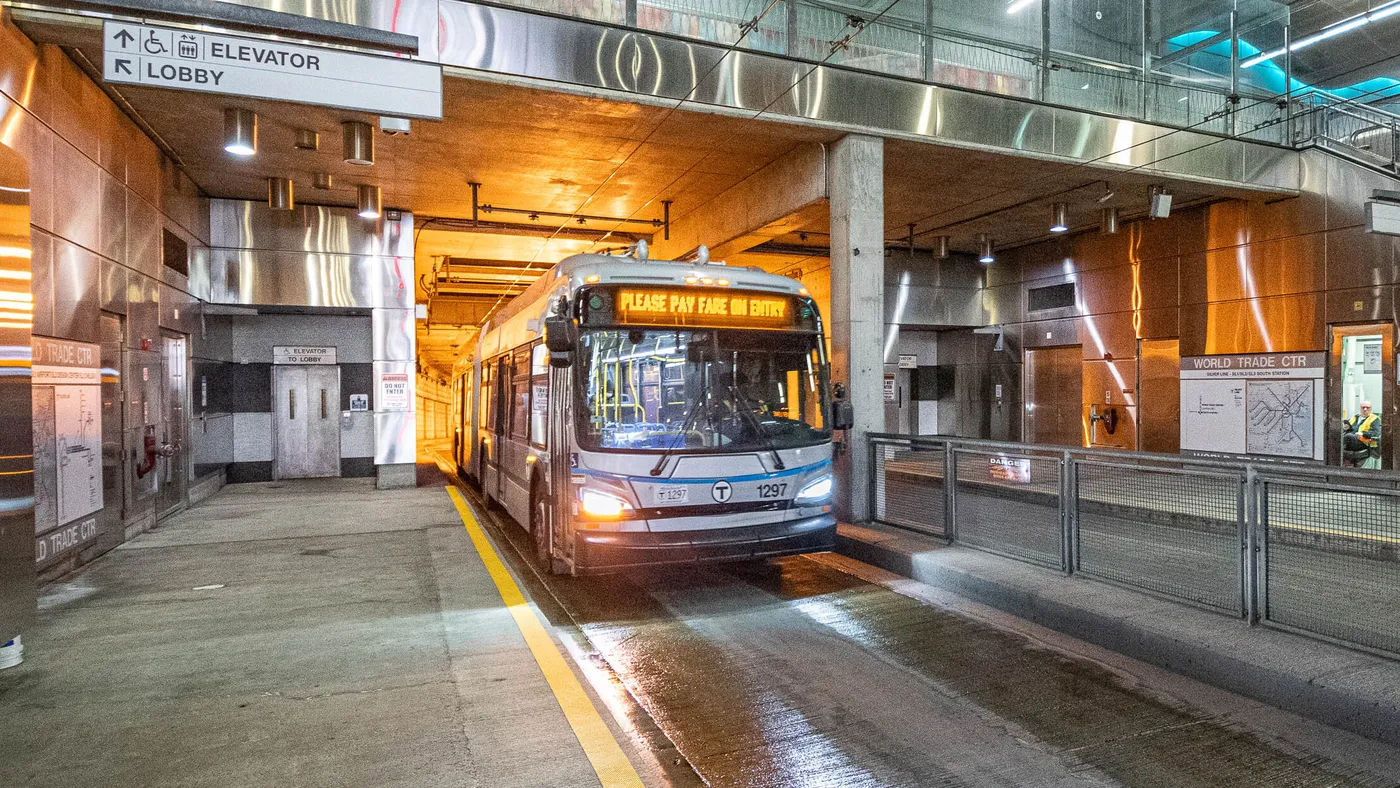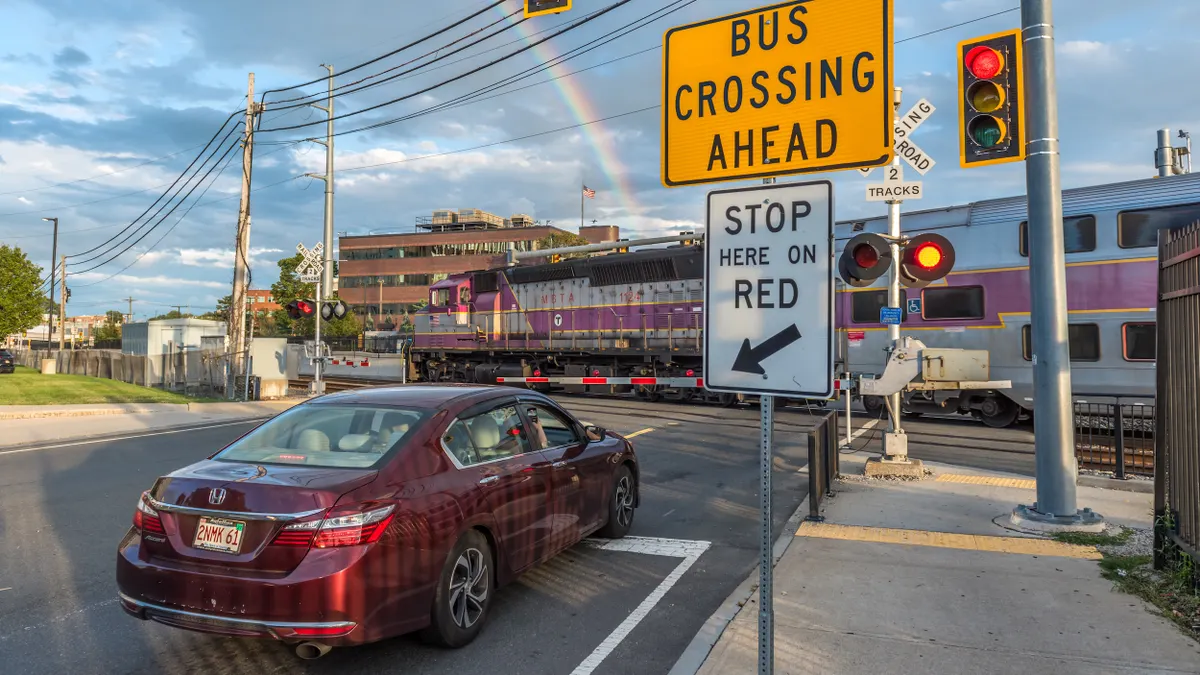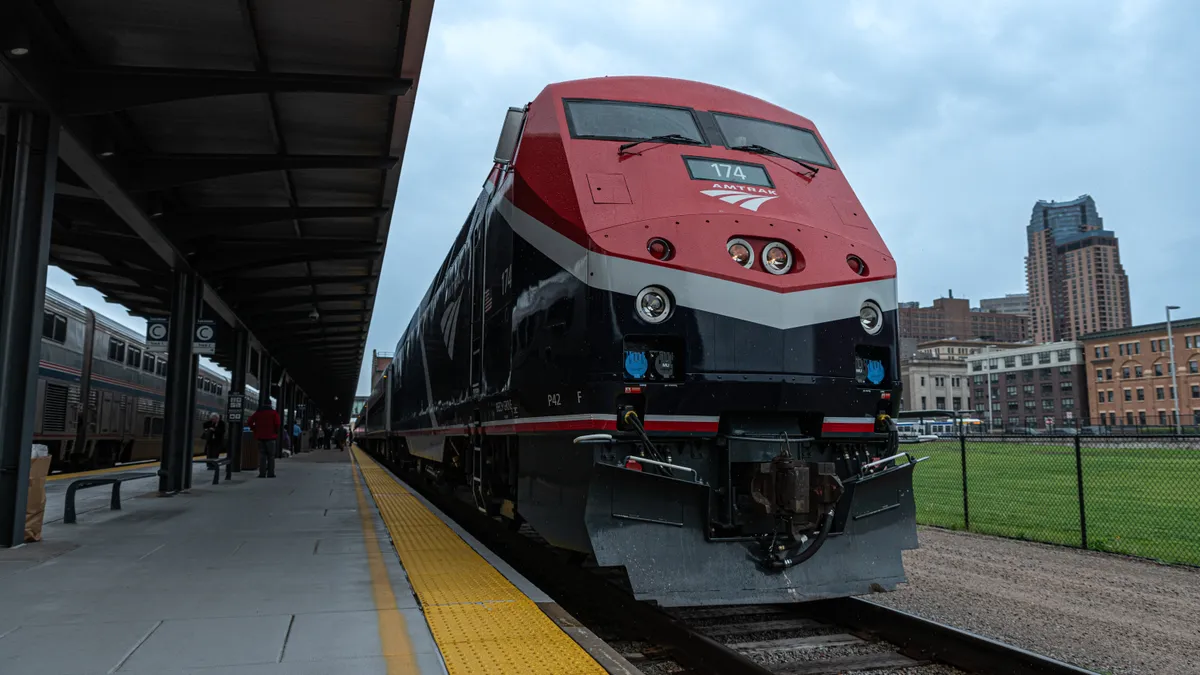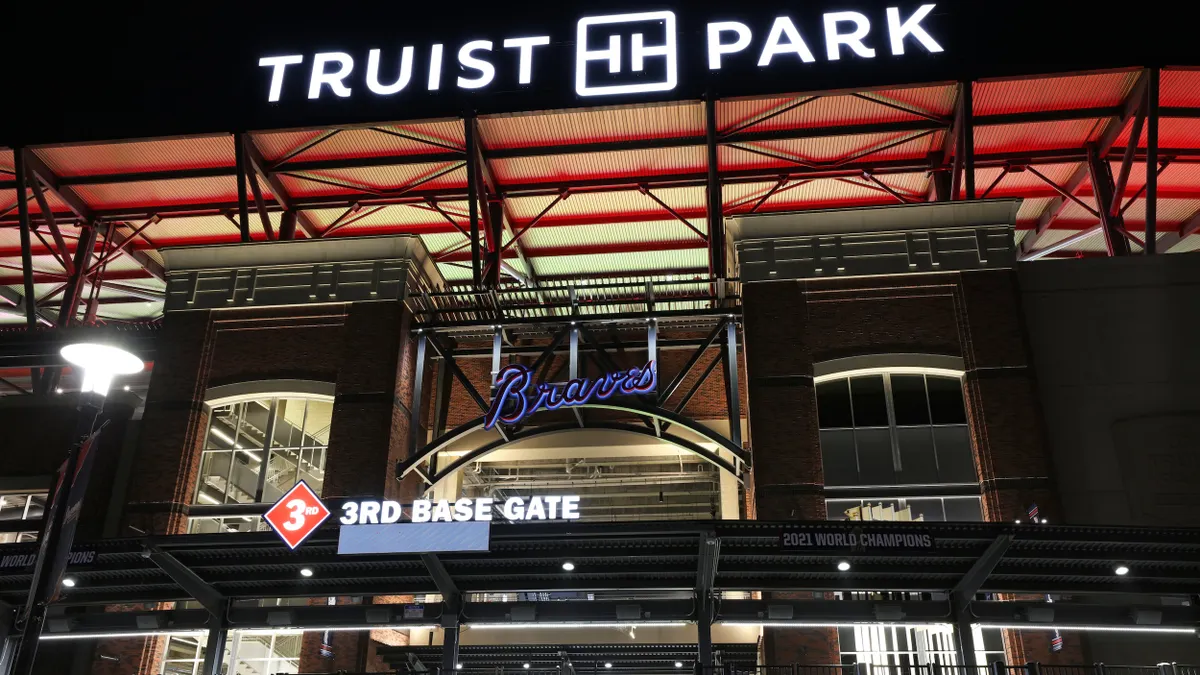Editor's note: This story is part of a series on the trends that will shape the smart cities industry in 2022.
A silent revolution is underway on city streets as transit agencies large and small replace noisy, polluting diesel buses with clean, quiet electric vehicles. But agencies and bus manufacturers alike warn that the transition is not as simple as signing a procurement order for new battery-powered buses.
The number of battery-electric transit buses (BEBs) currently on order or operating in the U.S. grew 112% from 2018 to 2021 according to data compiled yearly by Calstart. California leads the nation with almost 1,400 on the road or on order, followed by Washington, New York and Florida. A much smaller number of fuel-cell electric buses are out there, and their numbers are growing as well.
"It is a robust market with successful deployments happening all across the country," Dan Raudebaugh, executive director of the Center for Transportation and the Environment (CTE), said in an email. CTE is a nonprofit that helps develop and implement advanced transportation technologies. Raudebaugh said they have helped more than 70 transit agencies put electric buses on the street.
He named Austin, Texas; Seattle, Los Angeles and Oakland, California, as leaders in adopting battery-powered buses but added that smaller cities like Portland, Maine; Duluth, Minnesota; and Gainesville, Florida, are also adding these vehicles.

"Deploying these buses is challenging, but the buses work," Raudebaugh said. Bus for bus, electric vehicles cost more, mainly due to the high cost of batteries, and that affects procurement budgets. Transit agencies rely on federal funds for 80%-85% of the purchase price of buses, he said.
But the $1 trillion infrastructure legislation that passed last year increased funding for the Federal Transit Administration's (FTA) Low or No Emission Vehicle Grant Program and for the Buses and Bus Facilities Program, under which transit agencies can procure zero-emission buses.
The transition from fossil-fueled buses to electric buses may require operational changes due to charging cycles and range limits. Transit agencies need to carefully evaluate their current service and the feasibility of applying zero-emission technology, Raudebaugh said.
He said that planning is essential for transit agencies; many have already tested the waters with a small number of buses. Now, with that experience, they're getting ready to commit to transitioning their entire fleets to battery electrics. "We have long been convinced that public transit will be the first transportation sector to transition to zero emission," Raudebaugh said.
How a large transit agency is preparing for an all-electric bus fleet
With 1,150 buses, the Massachusetts Bay Transportation Authority (MBTA) operates some 180 routes with current average weekday ridership of 276,000. In 2019, the MBTA purchased five 60-foot battery-electric buses for the Silver Line, which serves Logan Airport, Boston South Station, Chinatown and other communities. Working from that experience, the agency expects to operate a fully electric fleet by 2040.
Bill Wolfgang, the MBTA’s director of vehicle engineering, and Scott Hamwey, director of its bus modernization program, are leading that transition. The first lesson they learned was how Boston's frigid winters play havoc with battery range, they told Smart Cities Dive in an interview. Wolfgang explained that with frequent stops and repeated door openings, keeping the bus interiors warm added to battery drain.
There were reliability issues with these first buses, Wolfgang said. He explained that connection issues between the charger and the vehicles reduced initial recharge reliability to less than 50%. That meant that some buses weren't fully charged for the next day's runs.
But technology has advanced, and charger reliability is now close to 90%, according to Wolfgang. "That allows us to transition our fleet into the modern day." One remaining barrier for the MBTA is that its bus depots and maintenance facilities are unable to accommodate electric buses.
For now, the MBTA is not planning on charging along the route, so all buses need to be fully recharged at their depots each night to complete the next day's schedules. That could require nightly monitoring of 100 to 200 buses per depot.
Pending funding, the MBTA plans to renovate and modernize five of its nine bus facilities by the end of the decade, while adding bus capacity to accommodate future ridership growth, said Hamwey. It will install charging systems and overhead pantographs and bring a lot more power to the facilities so they can charge the electric fleets, he added.
It gives our workforce a cleaner environment.

Bill Wolfgang
Director of Vehicle Engineering, Massachusetts Bay Transportation Authority
For those renovations, time is of the essence. The MBTA looks to replace its buses on a 12-year cycle, which requires buying 80 to 100 new vehicles each year, Wolfgang explained. If the maintenance facilities aren't ready to handle battery-electric vehicles, the agency will have to purchase diesel-electric hybrid buses instead.
According to Wolfgang, it will cost $4.5 billion to upgrade all of MBTA’s bus facilities and $100 million to $130 million annually for new buses, but maintenance costs could be lower over the life of the vehicles than they are for diesel or compressed natural gas (CNG) buses, he said.
Electric buses deliver other benefits as well. "It gives our workforce a cleaner environment," Wolfgang said, adding that these buses will be quieter and nonpolluting for the communities they serve.
"This is an opportunity for us as a government agency to lead in this area," Wolfgang declared, seated in front of a large picture of a new hybrid-electric bus soon to come to Boston. "It's on the production line with New Flyer," he explained about the vehicle pictured behind him. "We're really excited about this one."
Manufacturing the future of zero-emission bus transit
New Flyer, based in Winnipeg, Manitoba, got its start in 1930 and today is North America's largest transit bus manufacturer. It launched its first hybrid-electric bus in 1999 and its first battery-electric bus in 2012.
Jennifer McNeill, vice president of public sector sales and marketing for the company, said she saw a change in the transit bus market in late 2019, when agencies weren't willing to make traditional five-year purchasing commitments. They couldn't decide what to buy, she said, with choices ranging from diesel and CNG to battery and fuel-cell electrics. Then, with the onset of the pandemic, many transit agencies put purchasing on hold.
We believe that the transition to zero emission is happening.

Jennifer McNeill
Vice President of Public Sector Sales and Marketing, New Flyer
As sales ramped back up, McNeill said, "We're seeing a much larger percentage being zero-emission vehicles," with New Flyer receiving larger orders and agencies committing to multiyear agreements. "Now, we're getting into true transition."
Helping that shift along are industrywide charging standards allowing the chargers to work with vehicles from multiple bus manufacturers, and greater battery density delivering longer range. "We believe that the transition to zero emission is happening. It will end up with the majority, if not all, of our production being zero emission," McNeill said.
Austin commits to electrifying its transit fleet by 2035
Capital Metro Transportation Authority (CapMetro), which serves Austin, Texas, ordered 30 battery-electric buses from New Flyer and 26 from Proterra, a manufacturer of both buses and EV batteries, with options to purchase over 250 more.
The agency, with a 426-bus fleet, has 12 electric buses that have been in service for two years. Deputy CEO Dottie Watkins said she expects to fully electrify CapMetro's transit fleet around 2035, replacing its 55 commuter buses somewhat later.
"All of a sudden, going and buying a bus is fun and cool and exciting," Watkins exclaimed. But she also said there is a learning curve around charging and range management.
CapMetro will use both depot charging and on-route charging, placing chargers at transit centers, park-and-ride locations and major transfer points. That, Watkins said, will allow them to match the range of diesel buses. She also said the agency is talking with the local municipally-owned utility, Austin Energy, so the power grid will be ready where and when the growing number of battery buses will be deployed.
Talk to other transit systems that have operated electric buses. Don't be afraid to ask for help.

Dottie Watkins
Deputy CEO, Capital Metro Transportation Authority
Watkins stressed the importance of worker training: "We have seen firsthand how important training is across the board for maintenance employees, as well as operations employees, to make your electric bus deployment successful."
She said they talked to cities including Los Angeles and Seattle that were further ahead in bus electrification to learn about these and other issues. She urged other transit agencies to do the same: "Talk to other transit systems that have operated electric buses. Don't be afraid to ask for help."
Small transit agency in Oregon has big goals
The Lane Transit District (LTD) serves Lane County, Oregon, including the cities of Eugene and Springfield. Its 100-bus fleet currently includes diesel-electric hybrid buses and 11 battery-electric buses that were delivered last year, with an additional 19 BEBs arriving this year, according to Matt Imlach, the agency's director of fleet management. By the end of 2022, 30% of its fleet will be clean battery-electric buses, Imlach said.
The agency spent $10.6 million for its first 11 electric vehicles and the depot chargers, a purchase partially funded by the FTA’s Low or No Emission Vehicle Grant Program.
Imlach said the district prepared by installing plug-in depot chargers and training technicians about the vehicles' electric systems. Drivers, who were already familiar with hybrid-electric buses, took to the battery-electrics easily after a training course. "Some drivers love it as a challenge to see how much state-of-charge that they can bring the bus back with," he said.
The agency operates frequent-stop service and some bus rapid transit (BRT) lines, which travel farther with limited stops. That's an issue for the current range of electric buses, and Imlach said they are evaluating hydrogen fuel-cell vehicles for those routes.
Dealing with the cold in Canada and Northern U.S. cities
Cold climate cities are not shying away from battery-electric buses. Winnipeg Transit began operating its first BEBs in 2014 and now plans a side-by-side test of eight long-range battery-electric buses and eight fuel-cell electric buses for 12-18 months, supplied by New Flyer. The Toronto Transit Commission and the University of Michigan have also ordered battery-powered buses.
"The technology is ever-evolving," said Christos Kritsidimas, spokesperson for Nova Bus, a Canadian-based subsidiary of Volvo Group. "Every iteration gives a little bit more [battery] density, and with more density comes more range and longer life."
Nova Bus recently received an order from four transit authorities in the province of Quebec for 24 electric buses. Catherine Fournier, mayor of Longueuil, a city across the St. Lawrence River from Montreal, said in a statement that she expects half of its bus fleet to be electric by 2030.
Accelerating the transition to zero-emission
Battery-electric buses are not the only zero-emission buses, but they have dominated the market so far. As of September 2021, Calstart counted 3,364 battery-electric buses and 169 fuel-cell electric buses in use or on order in the U.S.
Fuel-cell vehicles use compressed hydrogen as an energy source. By combining hydrogen with oxygen through an electrochemical reaction, a fuel cell produces heat, water and electricity. The electric output continuously charges onboard batteries, allowing these vehicles to match the range of diesel and CNG buses.
The majority of fuel-cell electric buses are found in California, which has invested in and promoted hydrogen as a zero-emission fuel source. Foothill Transit and SunLine Transit Agency, both in Southern California, have committed to hydrogen power. In Illinois, the Champaign-Urbana Mass Transit District not only deployed 60-foot hydrogen fuel-cell electric buses, but the agency also constructed its own hydrogen fuel production station, powered by a solar array.
"Hydrogen fuel-cell [technology] is a growing appetite in our industry," said Ben Grunat, vice president of product planning and strategy for GILLIG, a California-based bus manufacturing company. And whether transit agencies choose fuel-cell electric or battery-electric vehicles, bus manufacturers say they are ready to help with the transition.
As Proterra Spokesperson Shane Levy put it, "Today, the question is no longer if communities will transition to 100% zero-emission transportation, but how fast we can get there."














